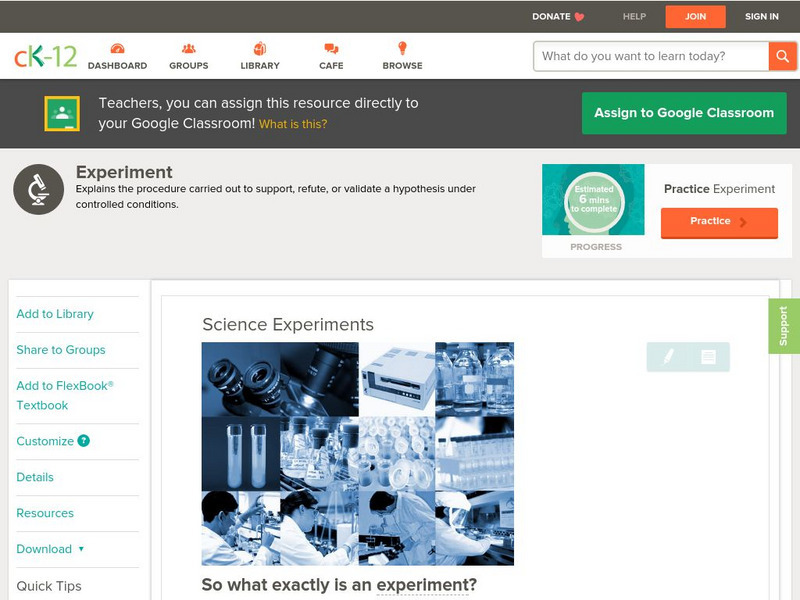Curated OER
Where Should They Hold the Fundraising Party?
Pupils explore financial applications of linear functions. As they investigate the steps necessary to plan a fundraising event, learners explore minimizing cost and maximizing profits.
Texas Instruments
Areas of Regular Polygons and Circles
Learners explore area of polygons and regular polygons in this math lesson. They calculate the area of several polygons using Cabri Jr. and analyze shapes and write formulas to solve for the area.
Curated OER
Distributive Property
Learners solve problems using distribution. In this algebra lesson, students factor equations using the distributive property. They graph their solution on a graph.
Curated OER
Triangle Midsegment
Learn how to calculate the length and midsegments of triangles. Learners differentiate between similar and congruent triangles. They create a spreadsheet with their findings.
Curated OER
EBT-rimental
Students engage in a lesson that gives them the tools needed to become knowledgeable credit consumers. The companion website for the ITV program TV-411 is used to provide learners with an interactive experience of what credit has to offer.
PBS
Predicting/Making a Hypothesis
Students analyze information from a variety of sources in order to create a hypothesis about the origin of an interesting family artifact.They create alternative hypotheses based upon available information to demonstrate that some...
Curated OER
Let it Grow, Let it Grow, Let it Grow
Students investigate, through a hands-on activity, in which type of soil a bean seed grows best. They create a bar graph representing each plant's growth in different soils.
Curated OER
Solving Systems by the Elimination Method
Pupils solve equations by elimination and use the TI to graph the lines and find the point of intersection.
Curated OER
Building Tetrahedral Kites
Young scholars work together to build tetrahedral kites. They must follow directions and the provided materials. They discover the engineering concepts needed to make the kite.
Curated OER
Wind Gauges
Students use FoilSim interactive software to become familiar with the way in which the flow of air across or around an airfoil affects its ability to create lift.
Curated OER
Wing Area Effects Problem Set
Young scholars read an explanation from a NASA Web-based textbook on lift and an explanation on the FoilSim software package given below. They use FoilSim to evaluate the relationship between wing area and lift.
Curated OER
Velocity Effects Problem Set
Students, after reading an explanation on lift from a NASA Web-based textbook and an explanation on the FoilSim software package given below, use FoilSim to evaluate the relationship between velocity and lift.
Curated OER
Characteristics of Lift and Wing Area
Learners use FoilSim to complete the activity and investigate the factors that affect lift and how wing area and lift are related.
Curated OER
Lift Equation Problem Set
Students, after reading an explanation from a NASA Web-based textbook, demonstrate an understanding of the text by using it, along with FoilSim, to complete an activity to graph and interpret the lift equation.
Curated OER
Bridges: Local, National and Global Connections
Fifth graders examine the role of bridges in commerce and transportation. They create a schedule for building a bridge and how much money it would take to build one.
Curated OER
Investigation of Timbre
Students design an experiment to analyze the timbre of different instruments. In this physics lesson, students analyze the missing quality in sound. They discuss their results in class.
Science Buddies
Science Buddies: Scientific Method Variables/hypothesis
Find out what variables are in a scientific investigation and what the difference is between an independent, dependent, and controlled variable. Look at samples of different types of variables and find out what makes a good variable.
American Association for the Advancement of Science
Aaas: Project 2061: Topic: Control of Variables
[Free Registration/Login Required] Create a science test that checks for student understanding in science, for common misconceptions, as well as for correct ideas. This is a list of key ideas related to Control of Variables. For each key...
CK-12 Foundation
Ck 12: Biology: Science Experiments
[Free Registration/Login may be required to access all resource tools.] Covers the scientific experimental design.
McGraw Hill
Glencoe Publishing: Practicing Scientific Processes
This site from Glencoe Publishing not only explains hypothesis but also tells how to design an experiment to test your hypothesis. Includes the difficult task of "Separating and controlling variables."
Vision Learning
Visionlearning: Research Methods: Experimentation in Scientific Research
An explanation of scientific research using variables and controls.
CK-12 Foundation
Ck 12: Biology: Science Experiments
[Free Registration/Login may be required to access all resource tools.] Introduction to scientific experiments.
Khan Academy
Khan Academy: Storing Data in Variables
Find out how computer programs instruct computers how to process data.
Khan Academy
Khan Academy: Storing Strings in Variables
When we're making a program, we often want to store sequences of letters. In programming lingo, we call each letter a character and we call the sequence a string.

























